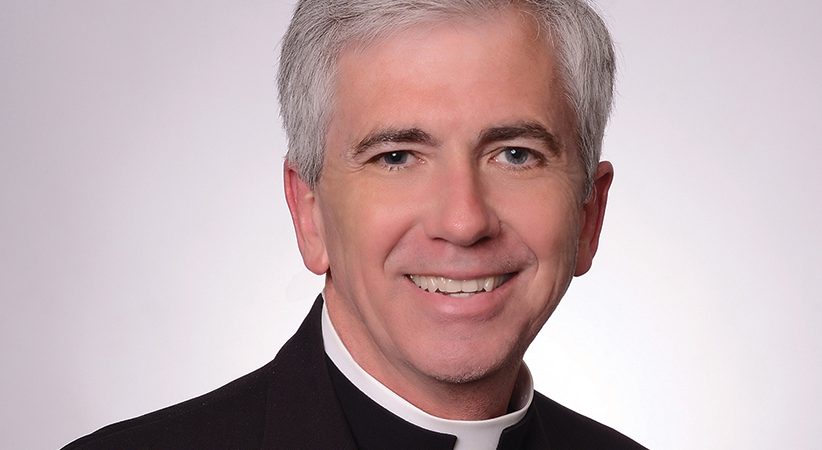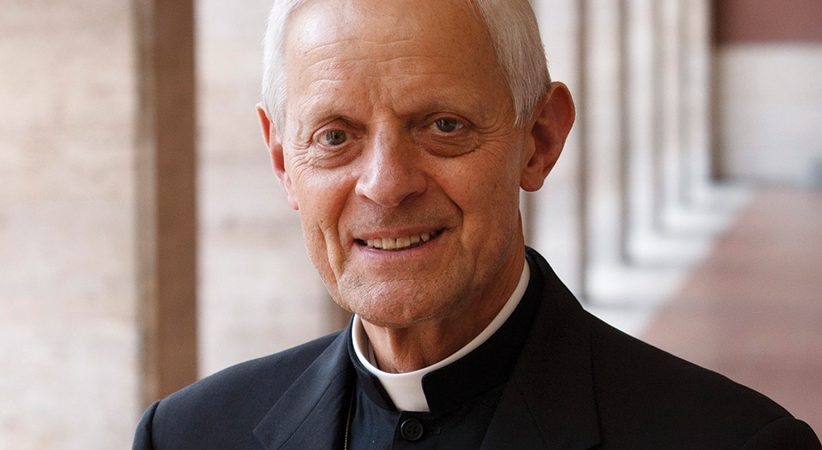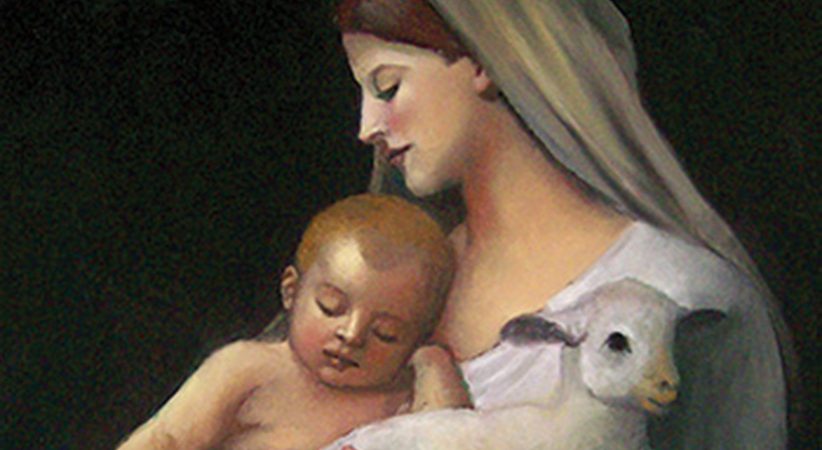A Storehouse of Treasures
Contemporary resources to consider for priestly ministry
Father Ronald D. Witherup Comments Off on A Storehouse of Treasures
Matthew’s Gospel quotes a saying of Jesus that might well describe a priest’s identity as minister of word and sacrament: “Every scribe trained for the kingdom of heaven is like a householder who brings from his treasure both the new and the old” (cf. Mt 13:52, my translation). What treasures new and old do we priests use in our ministry?
Frequently during priestly conferences, days of recollection or retreats, I am asked for recommended resources. I am always happy to receive this question, as it shows that many priests take seriously the need to fortify their seminary education from time to time with newer, updated perspectives.
Naturally, I come at this issue from my position as a biblical theologian, so many of my recommendations are therefore biblically oriented. I offered such an article more than a decade ago for The Priest (“A Pastor’s Bookshelf,” Volume 65, No. 11) but now happily offer a similar, updated one to point out some useful contemporary resources to consider for priestly ministry.
However, I must note a disclaimer: Some of the publications below are ones in which I have participated as an author and/or editor. I beg the reader’s indulgence, seeking your trust that I strive to objectively offer resources that I think are helpful to priests on the frontlines.
Our Bread and Butter: The Bible
I begin with explicit resources in the domain of biblical studies for two reasons. First, it is my personal strength, so why not put my best foot forward. Second, most priests I know are anxious to have more resources on the Bible that can help them with the arduous task of regularly preaching the Word of God. The Bible rightly should hold a prominent place in our own priestly ministry and spirituality, and if preaching is to become more biblical, then direct familiarity with God’s word is vital.
Publications in biblical studies continue to appear at a fast rate, so it can be difficult to keep up or decide how to prioritize. The following recommendations are based on the-biggest-bang-for-your-buck mentality — that is, long-term value in comparison to price. While there are several recent commentary series that have been published that are useful — “Sacra Pagina” or “Wisdom Commentary” from Liturgical Press, “Commentary on Sacred Scripture” or “Paideia: Commentaries on the New Testament” from Baker Academic Press — these are quite an investment and can be, as with any series, somewhat uneven.
For sheer value, I highly recommend the new, one-volume “The Paulist Biblical Commentary” (Paulist Press, $149.95). While “The New Jerome Biblical Commentary” (Prentice-Hall, $45.98) became a standard resource for most priests when it appeared, the commentaries proved to be less successful than the general articles because they were too technical in nature and did not provide much food for homiletic thought.
The advantage of “The Paulist Biblical Commentary,” which is an entire library of commentaries on each book of the Bible as well as general articles, is its spiritual and pastoral orientation. One reviewer tested it out by searching for commentary on one Sunday’s readings and found, to his surprise, that he received several insights to lead him to useful homiletic reflections.
Another one-volume resource will soon appear and likely will also be a good investment — namely, “The Jerome Biblical Commentary for the Twenty-First Century” (Bloomsbury, $100). Unlike its two preceding namesakes (“Jerome Biblical Commentary” and “New Jerome Biblical Commentary,” respectively, 1968 and 1990), this edition will also be more pastorally oriented. If some priests are put off by the price of such resources, we should remember that these constitute an entire library in one convenient format. They also make excellent gifts for priests, deacons, seminarians or catechists.
In a somewhat different mode, another resource I recommend for clergy consists of two new publications to help priests avoid the pitfalls of preaching from the New Testament in a manner that (perhaps unconsciously) promotes anti-Jewish sentiment. This is not a minor issue in our day, which has seen a rise in anti-Semitic violence, often perpetrated in the name of “Christian” or biblical teaching. I highly recommend “The Jewish Annotated New Testament” (Oxford University Press, $39.99) and “The Jewish Annotated Apocrypha” (Oxford University Press, $45).
In addition to useful commentary on the NRSV texts, there are also important essays that address sensitive topics like the Pharisees and Sadducees, the Torah, the Temple and its sacrificial system, the Jewish background of Jesus, Paul and the early Christians, and so on. The editors and authors are reputable Jewish scholars whose expertise and competence are essential resources we ignore at our own peril.
A new series of short, pastorally sensitive books on different themes from the Bible (truth in advertising: I am the general editor) is now available with the generic title, “What Does the Bible Say About …?” (New City Press, $16.95), a question I receive quite often from people who reflect seriously on what they hear at liturgy. New City Press, an arm of the Focolare Movement, is the publisher, and so far volumes have appeared on friendship, forgiveness, old age, life and death, immigrants, refugees and strangers, angels and demons, and slavery and freedom, with more volumes planned each year. The series is designed for both personal and group use, and thus can serve as a resource for Bible-study groups.
If you are looking for an update on what scholars are saying about biblical themes and books, another new series fits the bill. This one is a combined effort of the Catholic Biblical Association of America (CBA) and Paulist Press, which have teamed up to produce Biblical Studies from the CBA to disseminate more widely the results of modern biblical scholarship in a concise but comprehensive manner. So far, volumes have covered New Testament theology, the Letters of John, the landscape of the Holy Land, and Scripture and Tradition in Paul’s letters. Many more volumes are in preparation, and these will provide an excellent way to stay abreast of scholarly developments in a nontechnical fashion.
…………………………………………………………………………………………………………………………………………………………
‘Intellection Formation’
“Intellectual formation in theology and formation in the spiritual life, in particular the life of prayer, meet and strengthen each other, without detracting in any way from the soundness of research or from the spiritual tenor of prayer” — Pastores Dabo Vobis, No. 53
…………………………………………………………………………………………………………………………………………………………
Another standard resource for those interested in a magazine subscription remains The Bible Today (Liturgical Press). The price/value ratio of this bimonthly publication, which includes both digital and print editions, is well worth the investment and provides a way for priests to stay abreast of biblical studies, including critical advances in archaeological discoveries.
Finally, in this area, a new kind of resource offers intriguing views into biblical times through the medium of fiction! InterVarsity Academic Press publishes a series of short, pithy books in the genre of imaginative narratives from biblical times, entitled “A Week in the Life of …” (InterVarsity Academic Press, $127 for the series). Each book is authored by a reputable scholar who nonetheless creates a fictional story based on real figures and set within an authentic cultural narrative enhanced by sidebars and images. So far, topics include Rome, Corinth, Ephesus, the fall of Jerusalem, slaves, and women. The result is both entertaining and informative, a tool to enliven your way of envisioning the world of the New Testament.
Spirituality and Prayer
A second area where resources are usually sought concerns spiritual life and prayer. Here you cannot do better than returning to classic spiritual writers that you likely used in the seminary. These include Patristic and medieval authors, as well as modern ones. Thus, the writings of Augustine (new translations are available) and John Chrysostom, or Teresa of Ávila and John of the Cross, or Francis de Sales, Hildegard of Bingen, Jean Eudes, Thérèse de Lisieux and Brother Lawrence of the Resurrection can still inspire fruitful meditation, as well as Thomas Merton, Dorothy Day, William A. Barry, SJ, and even Pope Francis.
Beyond the standard resources, however, what would I recommend? Three useful publications come to mind. Robert J. Wicks’ edited compendium, “Prayer in the Catholic Tradition” (Franciscan Media, $39.99) is an excellent way to be exposed to the breadth of prayer from the Bible to modern times, with a judicious summary of the many diverse traditions that have flourished during the centuries.
A second helpful and practical resource is the best-selling “Learning to Pray: A Guide for Everyone” (HarperOne, $27.99) by James Martin, SJ. It is down-to-earth and covers virtually all stages and situations of prayer that might have receded in your background amid pastoral challenges.
My third resource has been around while, and its author, like James Martin, has published numerous books on spirituality. It is Ronald Rolheiser, OMI’s “The Holy Longing” (Image Books, $17), which I still find a valuable reflection on spirituality in a modern setting.
One of the more successful rediscoveries in recent years for Catholics has been lectio divina, the ancient practice of prayerful meditation of Scripture. While the format of lectio divina can vary, two resources help promote it.
One is “Give Us This Day” (Liturgical Press), a monthly subscription publication for the liturgical year. Although its format resembles Magnificat, a similar monthly publication for the Mass, “Give Us This Day” emphasizes more pastorally oriented reflections on the liturgical readings. Digital and/or print editions are also available.
A useful introduction to this ancient practice is Stephen J. Binz’s “Conversing with God in Scripture: A Contemporary Introduction to Lectio Divina” (Word Among Us Press, $13.95). The same author produces the “Threshold Bible Study” program (Twenty-Third Publications, $12.95), which along with the highly successful Little Rock Bible Study program and its Little Rock Catholic Study Bible (Liturgical Press, $49.95), provide useful resources for those looking for Bible study and not simply reflection.
Digital Resources
We have barely scratched the surface of what could be recommended to priests today because of the pace of publication and the rapid dissemination of resources. This is, even more, the case if we take into consideration the proliferation of electronic resources by the internet or digitalization.
This is all the truer for young people, who receive constant input from electronic sources, some of which are of questionable value. We have seen the danger of naive acceptance of data from social media concerning conspiracy theories and outright lies. So, due caution is absolutely needed. Among the innumerable resources on the internet I can recommend is Learn25.com (formerly Now You Know Media) for a wide variety of audiobooks, courses and lectures in multiple formats (video, MP3, etc.).
Naturally, many people have also been drawn to the evangelization resources of Bishop Robert F. Barron’s Word on Fire Institute (wordonfire.org), and also to the “Bible in a Year” podcast of Father Michael Schmitz, which is popular among millennials.
Although I would not agree with every approach taken by such electronic resources — perhaps I am showing my age as a “boomer”! — if they bring young people in touch with the Word of God and are not fundamentalistic in attitude, much good can come from them.
Not an Exhaustive List
My goal has not been to be exhaustive but suggestive. I have only dealt with resources with which I am personally acquainted and which I have found pertinent. (They are available either directly from publishers or from a third party, like Amazon.com.) Other individuals might well have different recommendations.
Most important is that priests do not allow their priestly and ministerial lives to stagnate. We should be wise enough to use productive resources that are both “new and old,” as the commendable householder in Jesus’ image of the good scribe. Intellectual stimulation, as well as constant renewal in prayer, is vital if a priest wishes to make an impact on people today. It is fine to continue to use tried-and-true resources that have served you well over many years in ministry; it is equally important to seek new avenues that might lead to insights you never even dreamed of.
Moreover, I believe we priests have an ethical obligation to stay updated. If we hope to be a force for good in a world filled with disinformation, conspiracy theories, naive or outdated ideas, or even distortions of the truth, then we have to be familiar with what is being distributed to the public at large and provide a truth-based understanding of our tradition.
Sulpician Father Ronald D. Witherup is superior general of the Society of Saint Sulpice and author of many books on Scripture and theology, including “Gold Tested in Fire: A New Pentecost for the Catholic Priesthood” (Liturgical, $14.99) and “Scripture and Tradition in the Letters of Paul” (Paulist, $19.95).
…………………………………………………………………………………………………………………………………………………….
On Accountability
“The best-laid plans for ongoing formation will amount to very little if they are not accompanied by a spirit and structure of accountability. Priests are answerable to the Church, to their people, and to themselves and their own sense of integrity, as they grow in their humanity, discipleship, and priestly ministry” — “Basic Plan for the Ongoing Formation of Priests,” USCCB, Part One, O.
…………………………………………………………………………………………………………………………………………………….





